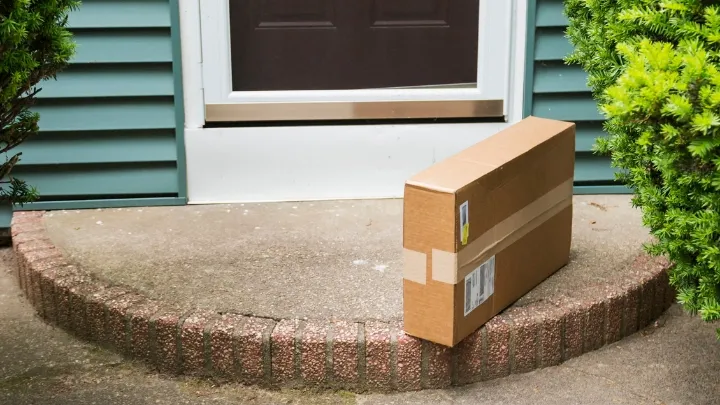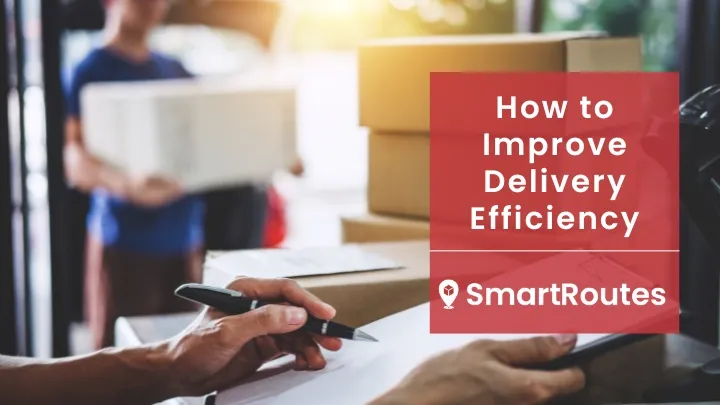Quick Summary
- Strategic route planning can cut fuel costs, reduce delivery times, and improve the customer experience.
- Balancing static and dynamic routes helps growing businesses adapt to changing demand without overloading drivers.
- Advanced route planning software and route optimization tools save time compared with manual route planning.
- Continuous analysis of route performance enables smarter resource allocation and improves overall operational efficiency.
If you’re often feeling like your delivery day never goes exactly as planned, then this blog is for you.
Unexpected orders, traffic and mismatched schedules can throw everything off in minutes.
Suddenly, drivers are stressed, customers are waiting, and your carefully planned day feels out of control.
For growing businesses, efficient route planning can change all of that. It is not just about saving time or fuel. It is about keeping your team productive, making smarter decisions, and ensuring your customers get what they expect, when they expect it.
Even if you have handled deliveries with simple tools before, scaling up requires more than guesswork.
Learning how to structure routes, balance your fleet, and respond to last-minute changes will help your business stay reliable and efficient as it grows.
Routing Best Practices Every Growing Business Should Know
Getting your deliveries from point A to point B might seem straightforward at first, but as your business grows, small inefficiencies add up.
The right approach to routing can save time, reduce costs, and make life easier for your drivers.
Below are the key strategies that can help you plan smarter delivery routes, keep your fleet productive, and deliver a better experience for your customers and they work whether you’re handling ten deliveries a day or hundreds.
1. Plan Routes and Schedules That Actually Work
The goal is to make sure your drivers spend less time on the road, your fleet is used efficiently, and your customers get their orders on time.
Start by looking at the patterns in your deliveries. Are there stops that always fall in the same neighborhoods? Can deliveries be grouped together in a way that minimizes backtracking? By thinking about routes strategically instead of just quickly assigning orders, you save hours each week and reduce stress for your team.

It also pays to consider driver schedules and vehicle capacity from the start. Matching the right driver to the right route, and the right vehicle to the right load, keeps deliveries smooth and prevents last-minute hiccups.
And while predictable routes are great, you’ll need flexibility too. Emergencies, rush orders, or unexpected traffic happen. That’s why a combination of static routes for routine deliveries and dynamic routes for unexpected changes works best for growing businesses. This balance lets you stay efficient without being caught off guard.
SmartRoutes Route Planning Software
Streamline your entire delivery process, all from one platform

2. Use Advanced Route Planning Software to Work Smarter, Not Harder
Once your delivery volume starts growing, manually planning routes quickly becomes overwhelming.
Routing software and route optimization tools take the guesswork out of scheduling and help your team work more efficiently.
Good software can calculate the fastest sequence for multiple stops, factor in traffic conditions, vehicle capacities, and driver availability, and even adjust routes on the fly when things change.
This turns hours of manual work into minutes, so your team can focus on getting deliveries out the door instead of managing inefficient spreadsheets and maps.
Even if you’re not ready to invest in a full-scale system, smaller tools like Google Maps or more basic delivery apps can help for low-volume routes (but the difference becomes obvious as soon as your delivery numbers grow!). By incorporating a purpose-built solution, you can:
- Save time and reduce errors that happen with manual route planning
- Plan efficient routes and improve delivery efficiency.
- Respond quickly to urgent orders or unexpected delays
When used well, these tools don’t just make deliveries faster—they make your entire operation more predictable and reliable.
3. Factor in Vehicle Capacity and Driver Availability
Even the smartest route plan can fall apart if it doesn’t account for the realities of your fleet and team.
Every vehicle has its limits, and every driver has a schedule and workload that needs to be balanced. Overlooking these details can lead to delays and missed deliveries.
Start by matching deliveries to the right vehicle. Consider size, weight limits, and any special requirements. This ensures each trip makes the most of your fleet without overloading anyone.
Next, look at your drivers’ availability. Assigning routes without considering schedules can leave some drivers overworked while others have gaps in their day.
For growing businesses, combining this approach with advanced route planning tools can make it even easier. Software can automatically match drivers and vehicles to the right optimized routes, ensuring each delivery is handled efficiently.
4. Prioritize Customer Preferences
Paying attention to customer preferences, like preferred delivery times or drop-off instructions, can make a big difference in satisfaction and loyalty.
In practice, this means adjusting your routes to accommodate these needs without slowing down your entire operation. With the right routing software or delivery software, you can factor in customer preferences automatically when planning routes.
This reduces the risk of missed deliveries and repeat trips, saving time and fuel.

Even small adjustments, like ensuring a high-value customer gets an early slot or combining deliveries to the same neighborhood, can have a noticeable impact on both efficiency and customer satisfaction.
As your business grows, keeping these preferences in mind helps you maintain a personal touch while still scaling operations (and don't forget to work on customer communication!).
5. Balance Static and Dynamic Routes
Not all deliveries are created equal. Some are predictable and repeat regularly, while others pop up at the last minute.
That’s why balancing static routes and dynamic routes is key for growing businesses.
Static routes work well for routine deliveries, giving drivers a clear, consistent plan. They reduce confusion and make planning easier.
But the real world is rarely that simple.
New orders, traffic delays, or customer changes require flexibility. That’s where dynamic routes come in, they allow your team to adjust on the fly without throwing everything off track.
A smart approach combines the two: use static routes as the backbone of your schedule and layer in dynamic adjustments as needed. This way, you maintain efficiency while staying responsive to unexpected changes.
By balancing predictability with flexibility, you can keep deliveries running smoothly, reduce stress on your drivers, and maintain high levels of customer satisfaction as your business scales.
6. Make Route Planning Part of Your Long-Term Strategy
Start by thinking beyond individual routes. Look at your fleet capacity, driver schedules, and delivery patterns over weeks and months.
Ask questions like: What’s the smartest way to allocate daily routes across our drivers? How can we reduce missed deliveries without overloading anyone? Are we making the most of our route optimization software?
By planning with a long-term perspective, you create a delivery operation that scales smoothly. This approach helps prevent bottlenecks, keeps drivers productive, and ensures your customers continue to get reliable service, even as order volumes grow.
Strategic planning also makes it easier to experiment and improve.
By combining manual route planning insights with advanced routing tools, you can test new approaches, compare results, and continually refine your system.
The more intentional you are, the less reactive you become, and the more predictable and profitable your deliveries will be.
Make Every Delivery Count
Growing your business doesn’t have to mean chaos on the road.
Small adjustments today, like factoring in vehicle capacity or tracking performance, can lead to big gains in efficiency, customer satisfaction, and team productivity over time.
If you’re ready to take the guesswork out of your delivery operations, SmartRoutes can help. With advanced route optimization software and tools designed for growing businesses, you can plan smarter routes, adjust dynamically to changing conditions, and keep both your drivers and customers happy.
Try SmartRoutes free for 7 days and see how strategic route planning can transform your delivery operations.
FAQ
1. What are the routing best practices for growing businesses?
Start by planning routes efficiently, considering vehicle capacity and driver schedules. Balance static and dynamic routes to stay flexible, factor in customer preferences, and continuously track performance. Using advanced route planning and route optimization software can make these steps easier and more reliable.
2. What’s the smartest way to allocate daily routes across our drivers?
The key is balancing workloads based on driver availability, route length, and delivery complexity. Assign deliveries so no one is overloaded, and use routing software to make adjustments in real time if urgent orders or changes come up.
3. How can I plan efficient routes and schedules?
Analyze your stops for geographic clustering, factor in delivery windows, and match the right vehicle to the right route. Manual route planning can work for small volumes, but for growing businesses, route optimization software ensures consistency and helps you respond quickly to last-minute changes.
4. How do I account for specific vehicle restrictions or requirements when planning routes?
Include vehicle details like height, weight, and type when planning. Good routing software can automatically flag routes that may violate restrictions, helping drivers avoid issues and keeping deliveries on track.
If you enjoyed this blog, you might also be interested in:





